Chrysler 2014 Annual Report Download - page 227
Download and view the complete annual report
Please find page 227 of the 2014 Chrysler annual report below. You can navigate through the pages in the report by either clicking on the pages listed below, or by using the keyword search tool below to find specific information within the annual report.-
 1
1 -
 2
2 -
 3
3 -
 4
4 -
 5
5 -
 6
6 -
 7
7 -
 8
8 -
 9
9 -
 10
10 -
 11
11 -
 12
12 -
 13
13 -
 14
14 -
 15
15 -
 16
16 -
 17
17 -
 18
18 -
 19
19 -
 20
20 -
 21
21 -
 22
22 -
 23
23 -
 24
24 -
 25
25 -
 26
26 -
 27
27 -
 28
28 -
 29
29 -
 30
30 -
 31
31 -
 32
32 -
 33
33 -
 34
34 -
 35
35 -
 36
36 -
 37
37 -
 38
38 -
 39
39 -
 40
40 -
 41
41 -
 42
42 -
 43
43 -
 44
44 -
 45
45 -
 46
46 -
 47
47 -
 48
48 -
 49
49 -
 50
50 -
 51
51 -
 52
52 -
 53
53 -
 54
54 -
 55
55 -
 56
56 -
 57
57 -
 58
58 -
 59
59 -
 60
60 -
 61
61 -
 62
62 -
 63
63 -
 64
64 -
 65
65 -
 66
66 -
 67
67 -
 68
68 -
 69
69 -
 70
70 -
 71
71 -
 72
72 -
 73
73 -
 74
74 -
 75
75 -
 76
76 -
 77
77 -
 78
78 -
 79
79 -
 80
80 -
 81
81 -
 82
82 -
 83
83 -
 84
84 -
 85
85 -
 86
86 -
 87
87 -
 88
88 -
 89
89 -
 90
90 -
 91
91 -
 92
92 -
 93
93 -
 94
94 -
 95
95 -
 96
96 -
 97
97 -
 98
98 -
 99
99 -
 100
100 -
 101
101 -
 102
102 -
 103
103 -
 104
104 -
 105
105 -
 106
106 -
 107
107 -
 108
108 -
 109
109 -
 110
110 -
 111
111 -
 112
112 -
 113
113 -
 114
114 -
 115
115 -
 116
116 -
 117
117 -
 118
118 -
 119
119 -
 120
120 -
 121
121 -
 122
122 -
 123
123 -
 124
124 -
 125
125 -
 126
126 -
 127
127 -
 128
128 -
 129
129 -
 130
130 -
 131
131 -
 132
132 -
 133
133 -
 134
134 -
 135
135 -
 136
136 -
 137
137 -
 138
138 -
 139
139 -
 140
140 -
 141
141 -
 142
142 -
 143
143 -
 144
144 -
 145
145 -
 146
146 -
 147
147 -
 148
148 -
 149
149 -
 150
150 -
 151
151 -
 152
152 -
 153
153 -
 154
154 -
 155
155 -
 156
156 -
 157
157 -
 158
158 -
 159
159 -
 160
160 -
 161
161 -
 162
162 -
 163
163 -
 164
164 -
 165
165 -
 166
166 -
 167
167 -
 168
168 -
 169
169 -
 170
170 -
 171
171 -
 172
172 -
 173
173 -
 174
174 -
 175
175 -
 176
176 -
 177
177 -
 178
178 -
 179
179 -
 180
180 -
 181
181 -
 182
182 -
 183
183 -
 184
184 -
 185
185 -
 186
186 -
 187
187 -
 188
188 -
 189
189 -
 190
190 -
 191
191 -
 192
192 -
 193
193 -
 194
194 -
 195
195 -
 196
196 -
 197
197 -
 198
198 -
 199
199 -
 200
200 -
 201
201 -
 202
202 -
 203
203 -
 204
204 -
 205
205 -
 206
206 -
 207
207 -
 208
208 -
 209
209 -
 210
210 -
 211
211 -
 212
212 -
 213
213 -
 214
214 -
 215
215 -
 216
216 -
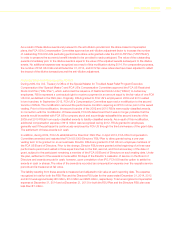 217
217 -
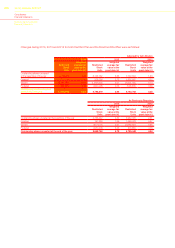 218
218 -
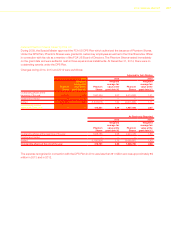 219
219 -
 220
220 -
 221
221 -
 222
222 -
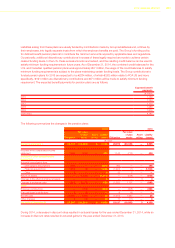 223
223 -
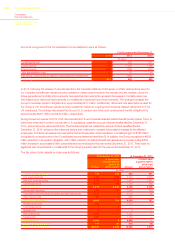 224
224 -
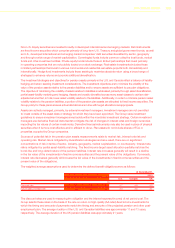 225
225 -
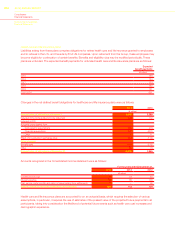 226
226 -
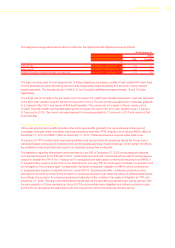 227
227 -
 228
228 -
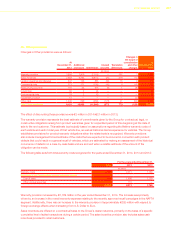 229
229 -
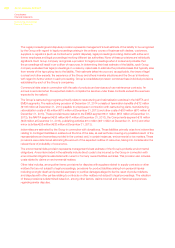 230
230 -
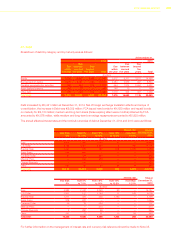 231
231 -
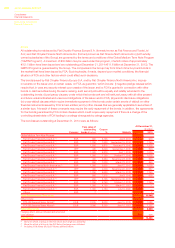 232
232 -
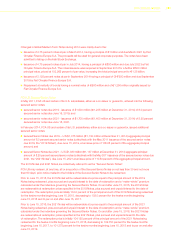 233
233 -
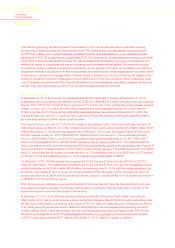 234
234 -
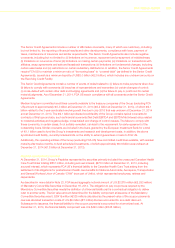 235
235 -
 236
236 -
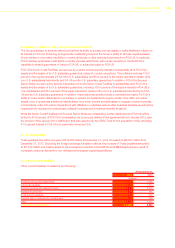 237
237 -
 238
238 -
 239
239 -
 240
240 -
 241
241 -
 242
242 -
 243
243 -
 244
244 -
 245
245 -
 246
246 -
 247
247 -
 248
248 -
 249
249 -
 250
250 -
 251
251 -
 252
252 -
 253
253 -
 254
254 -
 255
255 -
 256
256 -
 257
257 -
 258
258 -
 259
259 -
 260
260 -
 261
261 -
 262
262 -
 263
263 -
 264
264 -
 265
265 -
 266
266 -
 267
267 -
 268
268 -
 269
269 -
 270
270 -
 271
271 -
 272
272 -
 273
273 -
 274
274 -
 275
275 -
 276
276 -
 277
277 -
 278
278 -
 279
279 -
 280
280 -
 281
281 -
 282
282 -
 283
283 -
 284
284 -
 285
285 -
 286
286 -
 287
287 -
 288
288 -
 289
289 -
 290
290 -
 291
291 -
 292
292 -
 293
293 -
 294
294 -
 295
295 -
 296
296 -
 297
297 -
 298
298 -
 299
299 -
 300
300 -
 301
301 -
 302
302 -
 303
303
 |
 |
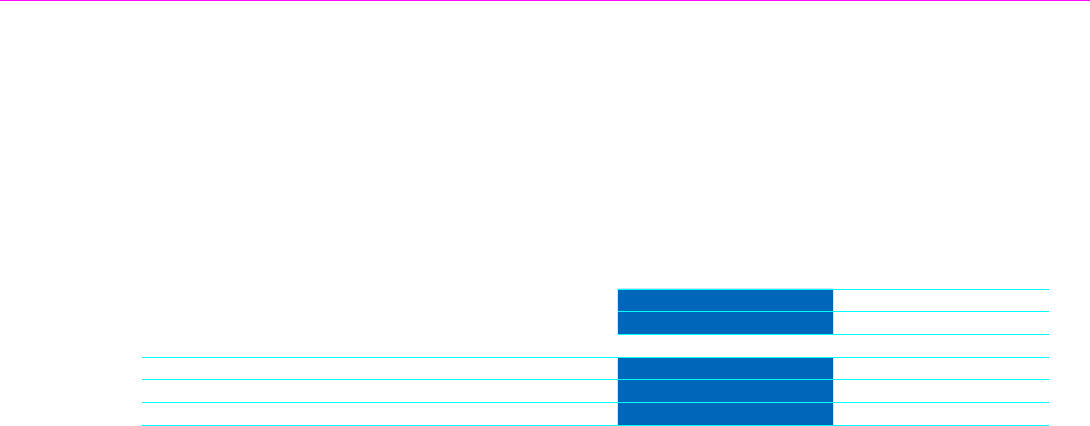
2014 | ANNUAL REPORT 225
The weighted average assumptions used to determine the defined benefit obligations were as follows:
At December 31,
2014 2013
U.S. Canada U.S. Canada
(%)
Discount rate 4.1 3.9 4.9 4.7
Salary growth — — n/a 2.7
Weighted average ultimate healthcare cost trend rate 5.0 3.6 5.0 3.6
The discount rates used for the measurement of these obligations are based on yields of high-quality (AA-rated) fixed
income securities for which the timing and amounts of payments match the timing and amounts of the projected
benefit payments. The average duration of the U.S. and Canadian liabilities was approximately 12 and 16 years,
respectively.
The annual rate of increase in the per capita cost of covered U.S. health care benefits assumed for next year and used
in the 2014 plan valuation was 6.5 percent (6.8 percent in 2013). The annual rate was assumed to decrease gradually
to 5.0 percent after 2021 and remain at that level thereafter. The annual rate of increase in the per capita cost of
covered Canadian health care benefits assumed for next year and used in the 2014 plan valuation was 3.3 percent
(3.3 percent in 2013). The annual rate was assumed to increase gradually to 3.6 percent in 2017 and remain at that
level thereafter.
Other post-employment benefits
Other post-employment benefits includes other employee benefits granted to Group employees in Europe and
comprises, amongst others, the Italian employee severance indemnity (TFR) obligation amounting to €886 million at
December 31, 2014 and €861 million at December 31, 2013. These schemes are required under Italian Law.
The amount of TFR to which each employee is entitled must be paid when the employee leaves the Group and is
calculated based on the period of employment and the taxable earnings of each employee. Under certain conditions
the entitlement may be partially advanced to an employee during their working life.
The legislation regarding this scheme was amended by Law 296 of December 27, 2006 and subsequent decrees
and regulations issued in the first part of 2007. Under these amendments, companies with at least 50 employees are
obliged to transfer the TFR to the “Treasury fund” managed by the Italian state-owned social security body (INPS) or
to supplementary pension funds. Prior to the amendments, accruing TFR for employees of all Italian companies could
be managed by the company itself. Consequently, the Italian companies’ obligation to INPS and the contributions
to supplementary pension funds take the form, under IAS 19 - Employee Benefits, of defined contribution plans
whereas the amounts recorded in the provision for employee severance pay retain the nature of defined benefit plans.
Accordingly, the provision for employee severance indemnity in Italy consists of the residual obligation for TFR until
December 31, 2006. This is an unfunded defined benefit plan as the benefits have already been entirely earned, with
the sole exception of future revaluations. Since 2007 the scheme has been classified as a defined contribution plan
and the Group recognizes the associated cost over the period in which the employee renders service.
